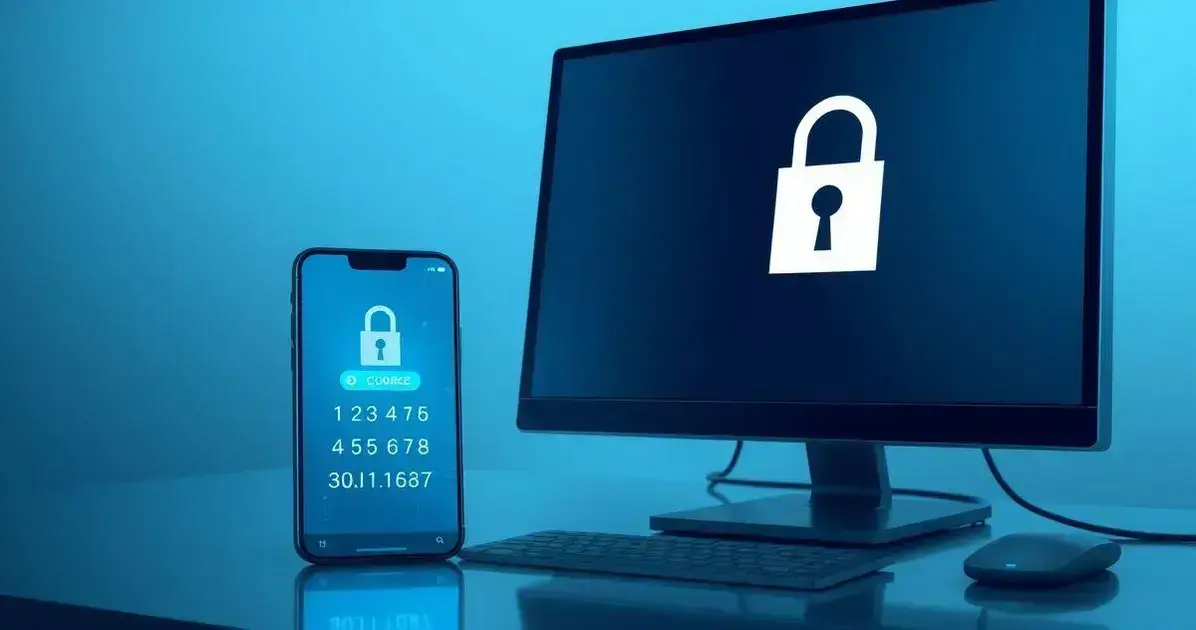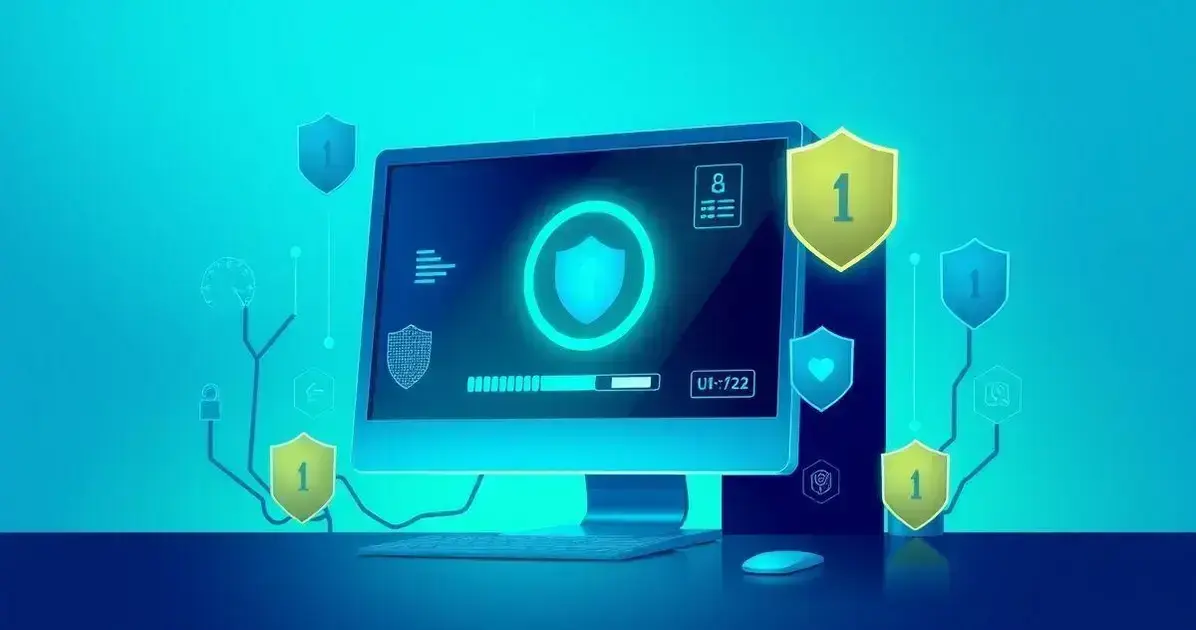Tech Tips for Digital Security are vital in protecting your personal data online. With increasing cyber threats, taking simple precautions can make a big difference in keeping your information safe.
Strong passwords and awareness of common online risks, like phishing, are essential steps in securing your digital life. A few key habits can help you stay one step ahead of cybercriminals.
Want to learn more about protecting your online presence? Keep reading for essential tips and practices.
Understanding Digital Security Basics
Understanding digital security basics is crucial in today’s online world. It helps you protect your sensitive information from cyber threats. Digital security means using tools and practices to keep your personal data safe while you browse, shop, or communicate online.
One fundamental aspect of digital security is password management. Strong passwords are essential for safeguarding your accounts. A good password should be long and complex, combining letters, numbers, and symbols. Remember, it’s important not to use the same password across multiple sites.
Another key area is awareness of online threats. Common risks include phishing scams, where attackers trick you into giving away your information. Being cautious with emails and links can help you avoid these traps. By learning the basics of digital security, you can confidently navigate the internet and keep your information safe.
Common Cyber Threats and How to Avoid Them
Common cyber threats include malware, phishing attacks, and ransomware. Malware is harmful software that can damage your computer or steal your personal information. Phishing involves fake emails that try to trick you into giving away your passwords or other sensitive data. Ransomware locks your files and demands payment to unlock them, which can be very scary.
To avoid these threats, it’s essential to keep your software updated. Regular updates help protect your system against the latest types of malware. Additionally, always be cautious when clicking on links in emails or messages. If something seems off, it’s better to double-check before taking any action.
Another effective way to stay safe is by using antivirus software. Antivirus programs can detect and remove many types of threats before they can harm your device. By understanding these common cyber threats and knowing how to avoid them, you can enhance your digital security and enjoy a safer online experience.
Best Practices for Strong Passwords
Tech Tips for Digital Security emphasize the importance of creating strong passwords to protect your accounts. A good password should be long, at least 12 characters, and include a mix of uppercase and lowercase letters, numbers, and special symbols. This makes it much harder for anyone to guess or crack your password.
Another crucial Tech Tip for Digital Security is using unique passwords for each of your accounts. Reusing passwords across multiple sites can put all your accounts at risk if one gets compromised. A password manager can help you securely store and manage your different passwords.
Lastly, regularly changing your passwords is essential to maintain security. Even with strong passwords, breaches can still occur. By staying proactive and following these Tech Tips for Digital Security, you can significantly improve your online safety and protect your personal information.
Using Two-Factor Authentication Effectively

Using two-factor authentication (2FA) effectively adds an extra layer of security to your online accounts. It requires not only your password but also a second form of verification. This can be a code sent to your phone or an app that generates a code. With 2FA, even if someone gets your password, they still cannot access your account without the second factor.
To set up 2FA, first check if the services you use offer this feature. Many popular websites and apps, like email and banking services, support it. Follow the instructions provided to enable 2FA, and make sure to enter a reliable phone number or link a trustworthy authentication app to receive your codes.
It’s important to remember that if you change your phone number or lose access to your authentication method, you may get locked out of your accounts. Always keep a backup option, such as a backup code, in a safe place. By using two-factor authentication effectively, you can greatly improve the security of your personal information.
Securing Your Wi-Fi Network
Tech Tips for Digital Security are essential for protecting your personal information online. One crucial step is changing the default password on your router, as simple passwords are easy targets for hackers. By choosing a strong, unique password, you make it much harder for unauthorized users to access your network.
Another key Tech Tip for Digital Security is enabling encryption on your Wi-Fi network. WPA3 encryption is the most secure option and ensures your data is scrambled, making it harder for outsiders to intercept. Always check your router’s settings to ensure encryption is activated.
Finally, it’s important to regularly update your router’s firmware. These updates help close security gaps and enhance your device’s performance. By following these Tech Tips for Digital Security, you can create a safer online environment for you and your family.
Spotting Phishing Attempts
Spotting phishing attempts is important to protect your personal information. Phishing scams often come in the form of emails or messages that look real but are actually fake. These messages may ask you to click on a link or provide your personal details, like passwords or credit card numbers. Always be wary of any unexpected requests, especially if they seem urgent or ask for sensitive information.
When you receive a suspicious email, take a close look at the sender’s address. Phishers often use email addresses that look similar to trusted companies but usually have small differences. For example, they might change a letter or add a number. Checking the sender’s address can help you spot a scam before you engage with it.
Another warning sign is poor grammar or spelling mistakes within the message. Legitimate companies usually review their communications carefully. If you notice errors in the email or an unprofessional tone, it’s likely a phishing attempt. By staying alert and aware of these signs, you can avoid falling victim to phishing attacks and keep your digital presence secure.
Safe Browsing Habits Online
Tech Tips for Digital Security highlight the importance of safe browsing habits to protect your personal information. Start by sticking to secure websites that have HTTPS in their URLs. This means the site is encrypted and safer to use. When shopping or entering sensitive information, always look for this security feature before proceeding.
Another key aspect of Tech Tips for Digital Security is avoiding unknown or suspicious links. These links can lead to unsafe sites or download harmful software onto your device. If you receive a link in an email or message from someone you do not recognize, it’s best to delete it without clicking. Always take a moment to verify the source before engaging.
Lastly, keep your browser and privacy settings up to date. Modern browsers offer various tools to block pop-ups and prevent tracking. Making sure these settings are active can help you browse more safely. By adopting good browsing habits, you can significantly lower the risk of encountering online threats.
Regular Software and Security Updates

Regular software and security updates are vital for keeping your devices safe. Software developers frequently release updates to fix security flaws that could be exploited by hackers. By updating your apps, operating systems, and antivirus programs, you ensure that you have the latest defenses against threats, making it harder for intruders to access your information.
Setting your devices to automatically install updates can help you stay secure without any extra effort. Many systems allow you to choose automatic updates, so you don’t have to remember to check for them. This way, you’ll always have the newest features and patches, which helps protect your online activities.
Additionally, it’s a good practice to periodically check for updates manually, especially for important software like your web browser and security applications. Regularly maintaining your software can prevent potential vulnerabilities and keep your digital life safe. Embracing these habits is a simple yet effective way to enhance your overall online security.
Tech Tips for Digital Security: Secure Your Online Presence Today
What is two-factor authentication?
Two-factor authentication is a security process that requires two different forms of identification to access an account.
How can I create a strong password?
A strong password should be at least 12 characters long and include a mix of letters, numbers, and symbols.
Why is it important to update my software regularly?
Updating software helps to patch security vulnerabilities and ensure that you have the latest features and improvements.
What should I do if I think my account has been hacked?
Immediately change your password and enable two-factor authentication if available. Check your account for any unauthorized activity.
Can I use public Wi-Fi securely?
Avoid accessing sensitive information over public Wi-Fi. Use a Virtual Private Network (VPN) if you must connect.
What are phishing attacks?
Phishing attacks are attempts to obtain sensitive information by disguising as a trustworthy entity in electronic communications.